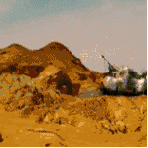|
gbs is gone forever, so I guess this is in here now. I wanted to read the last osha thread but I never had chance, and this is the next best thing for a fun time, here's the National Institute of Occupational Health and Safety's FACE (Fatality Assessment and Control Evaluation) reports. every time someone dies at work, one of these gets written up. they systematically go through the accident, what the likely cause of the it was, and how to keep it from happening again. here's my favorite (as in fascinating, not "OH MAN WICKED"; I did an art installation using a few of these things) one, Maintenance man dies after being drawn into 17 1/2-inch-diameter positive pressure intake pipe - Virginia, August 30, 1992.: quote:SUMMARY Every accident has a cause. Almost every accident can be prevented. Safety is everyone's business. There is one (1) fatality in this entire database (as far as I could find) that the FACE report ruled was unavoidable. Can you find it?
|
|
|
|

|
| # ? Apr 26, 2024 20:28 |
|
https://www.youtube.com/watch?v=yXU0jiBQfG0 https://www.youtube.com/watch?v=AEtbFm_CjE0 https://www.youtube.com/watch?v=-oB6DN5dYWo https://www.youtube.com/watch?v=AMHwri8TtNE https://www.youtube.com/watch?v=FAKcWM-yBkI atomicthumbs has a new favorite as of 06:28 on Sep 21, 2016 |
|
|
|
quote:17½-inch open pipe. The worst part is that had it caught his feet or his head, he'd probably have survived in an Augustus Gloop kind of way. (well, the worst part is his horrific death, but you know what I mean)
|
|
|
|
quote:The workers began to prepare the area for the replacement blower. As the two co-workers gathered the bolts and placed them in a bucket, the victim walked (facing the plant wall) in front of the 17½-inch open pipe. His chest was immediately pulled against the pipe opening and he yelled to his co-workers for help. Both co-workers tried to pull the victim away from the pipe; however, the force of the vacuum doubled him over backwards and pulled him into the pipe. His body was pulled through the pipe for approximately 38 feet before his path was blocked by the intake shroud of the next blower on the vacuum line. The entire vacuum line was shut down and the body was removed from the line approximately 1 hour after the incident occurred. The victim was pronounced dead at the scene by the county coroner. Jesus christ 
|
|
|
|
Looks like he'll never be the HEAD of a major corpor- gently caress, wrong joke.
|
|
|
HoboTech posted:Looks like he'll never be the HEAD of a major corpor- Sucks to be him.
|
|
|
|
|
"hmm that pipe full of boiling fuel oil is leaking" "lets hit it with a halberd" https://www.youtube.com/watch?v=QiILbGbk8Qk
|
|
|
|
LITERALLY A BIRD posted:Jesus christ don't gently caress around with the venturi effect, i think is the lesson here. That, and shut down, lock out, and tag out all sources of hazardous energy before performing maintenance.
|
|
|
|
The original thread has been restored to DIY & Hobbies btw Space Kablooey has a new favorite as of 19:39 on Sep 21, 2016 |
|
|
|
atomicthumbs posted:There is one (1) fatality in this entire database (as far as I could find) that the FACE report ruled was unavoidable. Can you find it? 
|
|
|
|
https://www.cdc.gov/niosh/face/In-house/full201001.html quote:On July 22, 2010, a 50-year-old worker was found deceased in a compost digestera tube at a solid waste facility. The victim worked as a picker on a tipping floor.b His duties were to separate compostable from non-compostable trash that was unloaded onto the tipping floor by residential and commercial waste haulers. Once the trash was separated, the compostable material was pushed into an open digester pit by a co-worker operating a front-end loader. A hydraulic ram located near the pit floor would then push the material into the digester tube.
|
|
|
|
not quite the right one, but I forgot about that. I'm talking an accidental death (not medically-related) that was ruled as unavoidable. HardDisk posted:The original thread has been restored to DIY & Hobbies btw well poo poo!!!
|
|
|
|
The weirdest thing about this video is the upbeat 1960s orchestral music as they talk about peeling the engineer from the ceiling above the reactor and scooping him into a lead-lined sarcophagus.
|
|
|
|
Spotted this guy while walking to work. He had to work on the side of that beam facing the street so he welded that strip of metal in place to stand on. No harness, 15 foot drop to fresh concrete with rebar sticking up without safety caps. atomicthumbs posted:don't gently caress around with the venturi effect, i think is the lesson here. That, and shut down, lock out, and tag out all sources of hazardous energy before performing maintenance.
|
|
|
|
Robot Lincoln posted:The weirdest thing about this video is the upbeat 1960s orchestral music as they talk about peeling the engineer from the ceiling above the reactor and scooping him into a lead-lined sarcophagus. I love the guy at the beginning pretending to read from important-looking documents on his desk. Actually the beginning of these documentaries are always my favorite part. This one was very dry, even for a documentary about an industrial accident which killed three people, and I was surprised at the brevity of the information about the workings of this little reactor. I'm still left wondering wtf that third guy was doing in the ceiling -? One of the links on the youtube page was for the Kursk submarine disaster, and it was surprisingly well-done, with a lot of facts and not a lot of flashy nonsense. I was just turning 29 at the time of the event, and I remember very clearly how nobody thought that the cold war was actually over at the time, even though the USSR was dead. The documentary captured that very well and also tastefully - respectfully for both those that died and for those that vainly but bravely attempted rescue. A true tragedy, and a good watch if you are interested in the subject. The entire documentary is full of information with very little filler.
|
|
|
|
C.M. Kruger posted:"hmm that pipe full of boiling fuel oil is leaking" You had me at Contra Costa County.
|
|
|
|
OK, this aspect of the report confuses me. I have a science and engineering background, but I still don't understand this description: "although the line, which remained operational, contained 3,740 psi of vacuum pressure..." By my definition, being a "vacuum line" implies that the pressure inside the line must be less than atmospheric (14.7 psia). And if a man is walking around the site (at atmospheric pressure), and he walks in front of an opening to a line which contains 3740 psi, he is going to be blasted away from the line, not sucked into it. There's no such thing as "3740 psi of vacuum pressure" unless possibly talking about some situation deep underwater where a line is at a pressure less than the surrounding water pressure. Can someone please explain?
|
|
|
|
Might be that it's not meant to be scientifically accurate, but more meant to convey how strong the suction in the pipe is to a layperson. To me at least it gives a pretty good idea of the forces involved.
|
|
|
|
Still though, I'm sure I"m misunderstanding myself, but even if it was a perfect vacuum there would only be 1 atmosphere of pressure differential if you aren't underwater like he said. And I thought that wasn't that huge of a difference? I can understand it being underwater, as the water exerts much more pressure than earth atmosphere to make a bigger differential. What am I missing?
|
|
|
|
It confused me at first too, and I believe they mean to say suction pressure. As in, the pump is mechanically creating force equivalent to a 3,740 PSI pressure differential.
|
|
|
|
I think they meant 3.740 psi E: ran the math on that, ~900lb total force across the opening might be enough to taco a grown man. shame on an IGA has a new favorite as of 17:21 on Sep 22, 2016 |
|
|
|
Yeah I don't think anyone is blowing woodchips at 3700 psi. It was a transcription or data entry error and they likely meant -3.740 PSIg.
|
|
|
|
GWBBQ posted:Spotted this guy while walking to work. He had to work on the side of that beam facing the street so he welded that strip of metal in place to stand on. No harness, 15 foot drop to fresh concrete with rebar sticking up without safety caps. Isn't that red strap around his leg a safety harness? Maybe he's tied off and you just can't see it from this angle, since he's wearing the harness.
|
|
|
|
The Locator posted:Isn't that red strap around his leg a safety harness? Maybe he's tied off and you just can't see it from this angle, since he's wearing the harness.
|
|
|
|
zedprime posted:Yeah I don't think anyone is blowing woodchips at 3700 psi. It was a transcription or data entry error and they likely meant -3.740 PSIg. They may also have meant 3700 CFM, or a velocity of 3700 FPM: http://www.hauckburner.com/pdf/pneumatic%20conveying%20%20%20(GJ74).pdf
|
|
|
|
The shoddy animations that always accompany OSHA videos have a weird charm. "Jesus can you guys believe this poo poo?! Guys?" Internet Kraken has a new favorite as of 18:27 on Sep 22, 2016 |
|
|
|
Internet Kraken posted:The shoddy animations that always accompany OSHA videos have a weird charm. Firewatch sequel lookin' good.
|
|
|
|
FYI, the original thread got moved to DIY and is still going.
|
|
|
|
dpbjinc posted:FYI, the original thread got moved to DIY and is still going. Yes.
|
|
|
|

|
| # ? Apr 26, 2024 20:28 |
|
Number_6 posted:OK, this aspect of the report confuses me. I have a science and engineering background, but I still don't understand this description: "although the line, which remained operational, contained 3,740 psi of vacuum pressure..." By my definition, being a "vacuum line" implies that the pressure inside the line must be less than atmospheric (14.7 psia). And if a man is walking around the site (at atmospheric pressure), and he walks in front of an opening to a line which contains 3740 psi, he is going to be blasted away from the line, not sucked into it. There's no such thing as "3740 psi of vacuum pressure" unless possibly talking about some situation deep underwater where a line is at a pressure less than the surrounding water pressure. I think they use a series of blowers angled the way they want the wood chips to move blowing into the pipe at an angle to create airflow through the pipe, creating a vacuum at one end. I'm tired and phone posting so I don't think I explained it very well. Can't be hosed drawing pictures either.
|
|
|






























